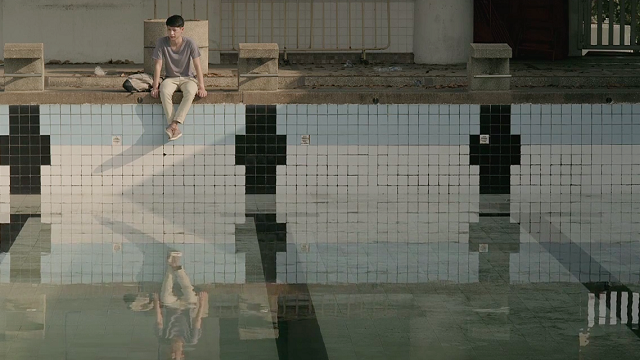For the first 30 minutes, The Blue Hour operates as a Thai take on the usual coming-of-age gay story. Tam, a bullied skinny gay boy, meets Phum, an older muscular boy, in an abandoned public pool. In between jerking each other off and swimming in their underwear, they hint that the pool might be haunted by the people who were actively drowned. The ghost stories feel like teenagers scaring each other in a macabre game. By the 45 minute mark, Tam and Phum are on a date in what seems to be a trash-fueled landfill, finding dead bodies beneath the trash, dodging gang members, and fucking in the midst of the stink. Suddenly, a traditional romance becomes a spooky Lynchian horror movie.
The plot of The Blue Hour is border incomprehensible, as it may or may not be out of chronological order, it may or may not be a fever dream, Tam may or may not be schizophrenic, and supernatural elements may or may not be at play. The metaphor of Tam’s frenzied mind may not be a metaphor, while the literal may not be literal. Anucha Boonyawatana seems to be making his own David Lynch in the ghetto not-quite horror movie with dream logic and craziness abound.
Perhaps the most fascinating aspect of The Blue Hour is how it plays with time in real life. The first 30 minutes seem to fly by in mere minutes, while each minute in the final act seems to drag for eternities. And, even as the time seems to drag, the movie morphs in ways that make each scene seem to be hours from the scene that immediately preceded it. If this didn’t play into the themes of reality not being reality, this time not being of itself, I’d call this amateurish. But, it seems purposeful and literal, and a fascinating skill of bewildering magic.
I’ve seen The Blue Hour twice, now. I have no idea if I love or hate this movie. It could be the worst movie in existence, or it could be the best movie to feature mildew ghosts. It acts like Inland Empire at half speed. I can’t say it’s good, I can’t say its bad. I can’t say anything. And, that, to me, is intriguing.

